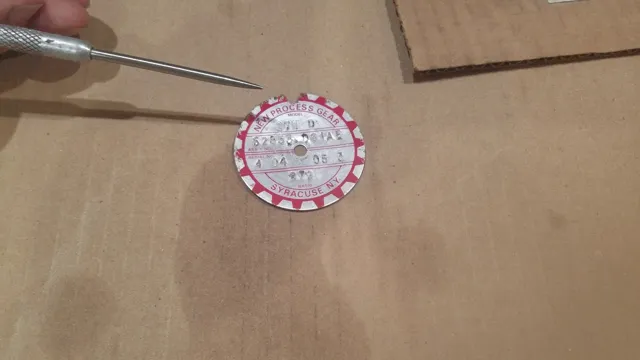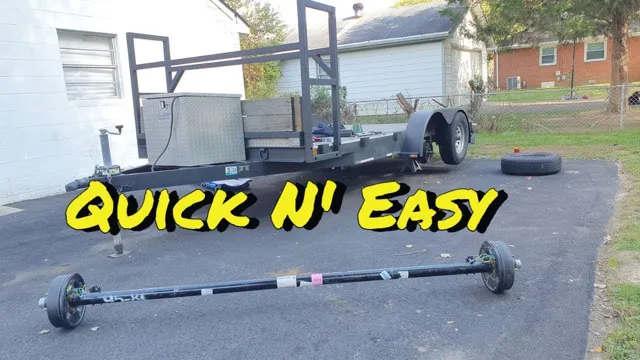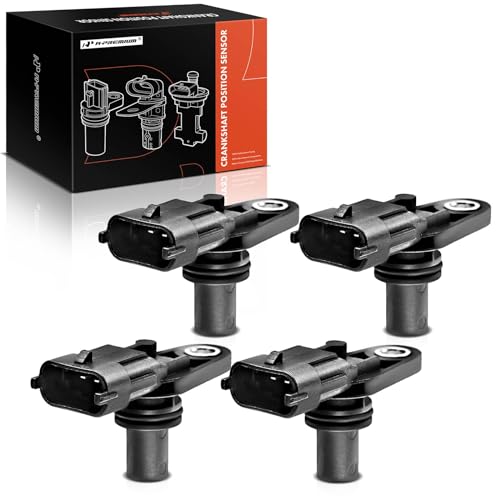Why My Car Making Humming Noise At 40 MPH? (Causes And Fixes)
Have you ever experienced a mysterious humming noise emanating from your car when cruising at around 40 miles per hour? It’s an unsettling situation that can leave you wondering about the cause and potential implications. Unusual noises in a vehicle should never be ignored, as they can indicate underlying issues that require attention.
In this article, we will delve into the reasons behind that puzzling humming noise you’re hearing at 40 MPH. We’ll explore various factors that can contribute to the noise, from tire-related problems to issues with wheel bearings, drivetrain components, and even aerodynamics. By understanding the potential causes, you’ll be better equipped to diagnose and resolve the issue.
It’s essential to address any abnormal sounds in your car promptly, as they can signify problems that, if left unattended, may lead to further damage or compromise your safety on the road. While we’ll discuss possible solutions, it’s important to note that professional diagnosis and assistance from a qualified mechanic or technician are highly recommended to accurately identify and resolve the source of the humming noise.
So, let’s unravel the mystery behind your car’s humming noise and get you back on the road with a quiet and smooth ride at 40 MPH.
Understanding the Humming Noise:
When it comes to diagnosing and resolving the humming noise in your car, it’s crucial to have a clear understanding of its characteristics and potential sources. Here’s what you need to know:
The humming noise is a low-pitched, continuous sound that may vary in intensity. It is often described as a subtle droning or vibrating noise that can be heard both inside and outside the vehicle. The frequency of the humming noise can differ, but it typically falls within the range of low to mid frequencies.
What makes the humming noise particularly challenging is that it can originate from various components or systems within the vehicle. It is not limited to a single source, making the diagnostic process more complex. Some of the common culprits include:
1. Tire Issues: Worn-out or unevenly worn tires can create a humming noise, especially at higher speeds. Additionally, improper tire pressure can also contribute to this noise.
2. Wheel Bearings: Faulty wheel bearings can cause a humming noise that becomes more pronounced as you accelerate. Wheel bearings are responsible for smooth rotation of the wheels, and when they wear out or become damaged, they can produce a distinct humming sound.
3. Drivetrain Problems: Issues with the differential or damaged constant velocity (CV) joints can generate a humming noise. The differential is responsible for distributing power to the wheels, and problems with it can lead to abnormal noises. Similarly, worn or damaged CV joints can produce a humming noise during acceleration or while making turns.
4. Aerodynamic Factors: Sometimes, the humming noise can be related to the vehicle’s aerodynamics. Certain design features or damage to the vehicle’s exterior, such as misaligned doors or windshield, can cause air turbulence and result in a humming sound.
Diagnosing the Issue:
When faced with a humming noise in your car, it’s essential to prioritize a professional diagnosis to accurately identify the source of the problem. While it might be tempting to attempt a DIY approach, consulting a qualified mechanic or technician is highly recommended for the following reasons:
1. Expertise and Experience: Professional automotive technicians have the knowledge, expertise, and experience to diagnose complex issues effectively. They are familiar with various vehicle systems and components, making them better equipped to identify the specific source of the humming noise.
2. Specialized Diagnostic Tools: Mechanics have access to specialized diagnostic tools and equipment that can aid in pinpointing the exact cause of the noise. These tools allow for comprehensive testing, data analysis, and readings from different sensors and components. The accuracy and reliability of the diagnosis are significantly enhanced through the use of these tools.
3. Systematic Approach: Professionals follow a systematic approach to diagnosis. They will inspect and test different potential sources of the humming noise, ruling out possibilities one by one until the true cause is identified. This methodical process helps avoid unnecessary repairs and ensures that the correct issue is addressed.
4. Comprehensive Evaluation: Professional diagnosis goes beyond identifying the source of the humming noise. It involves a thorough evaluation of related components and systems to determine if any other issues are present or if there is a cascading effect of problems. This comprehensive assessment helps prevent future complications and ensures a reliable long-term solution.
5. Warranty Considerations: If your vehicle is still under warranty, attempting DIY repairs or modifications without professional diagnosis and approval may void the warranty. Consulting a professional ensures that all necessary steps are taken within the warranty guidelines, protecting your rights as a vehicle owner.
Remember, attempting to diagnose and repair the issue yourself without proper knowledge and diagnostic tools can lead to misdiagnosis, ineffective repairs, or even further damage to your vehicle. The humming noise may have multiple potential causes, and accurately identifying the true source is critical for a successful resolution.
Solutions and Repairs:
Tire-Related Solutions:
When it comes to addressing the humming noise in your car, the specific solution depends on the underlying cause. Let’s explore some potential solutions for tire-related issues:
1. Tire Rotation and Alignment:
Tire Wear: If the humming noise is due to unevenly worn tires, a simple solution is to have your tires rotated. This involves moving the tires to different positions on your vehicle to ensure more even wear. Additionally, a proper wheel alignment can help correct any misalignment issues that may contribute to tire wear and noise.
2. Tire Replacement:
– Worn-Out Tires: If your tires are excessively worn, especially on the tread, it’s crucial to replace them. Bald or severely worn tires can create excessive noise and compromise traction and safety. Choose high-quality tires that are appropriate for your vehicle and driving conditions.
3. Tire Pressure Maintenance:
– Improper Tire Pressure: Check and maintain the recommended tire pressure for your vehicle. Underinflated or overinflated tires can cause uneven wear and generate humming noises. Use a tire pressure gauge to ensure the tires are inflated to the manufacturer’s recommended PSI (pounds per square inch).
4. Tire Balancing:
– Imbalanced Tires: If the humming noise persists after rotating the tires, it may be necessary to have them balanced. Tire balancing involves adjusting the weight distribution on each wheel to eliminate vibrations and reduce noise. This process is typically performed using specialized equipment by a professional technician.
Wheel Bearing Solutions:
If the humming noise in your car is caused by faulty wheel bearings, here are some potential solutions to address the issue:
1. Wheel Bearing Inspection:
– A qualified mechanic will first inspect the wheel bearings to determine their condition. They will check for signs of wear, damage, or excessive play. If the bearings are found to be faulty, further action will be taken.
2. Wheel Bearing Replacement:
– If the wheel bearings are worn out or damaged, replacement is usually the most effective solution. The old bearings will be removed, and new ones that are compatible with your vehicle will be installed. It is important to use high-quality replacement bearings to ensure optimal performance and longevity.
3. Proper Lubrication:
– In some cases, insufficient lubrication or contaminated grease can cause the wheel bearings to produce a humming noise. If the bearings are still in good condition, a mechanic may clean them and apply fresh, high-quality wheel bearing grease to resolve the issue. Proper lubrication helps reduce friction and noise within the bearings.
4. Related Component Inspection:
– Along with wheel bearings, it is essential to inspect related components such as the hub assembly and seals. Damage or wear in these components can affect the performance of the wheel bearings. If any issues are found, appropriate repairs or replacements will be carried out.
Drivetrain and CV Joint Solutions:
If the humming noise in your car is originating from drivetrain components or CV joints, here are some potential solutions to address the issue:
1. Differential Servicing:
– If the humming noise is related to the differential, it is crucial to have it serviced by a professional technician. The differential allows the wheels to rotate at different speeds while transferring power from the engine to the wheels. Servicing the differential may involve draining and replacing the fluid, inspecting and replacing worn components, and ensuring proper alignment and functionality.
2. CV Joint Replacement:
– In the case of worn or damaged constant velocity (CV) joints, replacement is often necessary. CV joints are responsible for transferring power from the transmission to the wheels while accommodating the up-and-down motion of the suspension. If the CV joints are worn, they can produce a humming noise. Replacing the affected CV joints with new, high-quality parts is typically the best solution.
3. Proper Lubrication:
– In some instances, the humming noise from the drivetrain or CV joints may be due to insufficient lubrication. A qualified mechanic may inspect and lubricate the drivetrain components, including the CV joints, with the appropriate lubricant. This helps reduce friction, noise, and potential damage.
4. Related Component Inspection:
– Along with the drivetrain and CV joints, other related components such as drive shafts, axles, and boots should be inspected for any signs of damage or wear. If any issues are detected, the necessary repairs or replacements will be carried out to ensure optimal drivetrain performance and minimize noise.
Aerodynamic Solutions:
If the humming noise in your car is related to aerodynamic factors, here are some potential solutions to address the issue:
1. Inspection of Exterior Components:
– Conduct a thorough inspection of the exterior components of your vehicle. Look for any misaligned or damaged parts such as doors, windows, fenders, or the hood. These misalignments or damages can disrupt the smooth airflow around the vehicle, leading to turbulence and the production of a humming noise.
2. Repair or Adjustment of Exterior Components:
– If misalignments or damages are found during the inspection, consult a professional body shop or technician to repair or adjust the affected exterior components. They can realign or repair the parts to restore the vehicle’s original aerodynamic design and minimize the noise caused by turbulent airflow.
3. Windshield Inspection and Replacement:
– Check your windshield for any chips, cracks, or improper installation. Damaged or incorrectly installed windshields can create disturbances in the airflow, resulting in a humming noise. If necessary, have the windshield repaired or replaced by a qualified technician to ensure proper alignment and minimize aerodynamic disruptions.
4. Roof Rack and Accessories:
– If you have a roof rack or accessories installed on your vehicle, such as bike racks, cargo boxes, or roof-mounted antennas, they can impact the aerodynamics and contribute to the humming noise. Consider removing these accessories when not in use to reduce wind resistance and noise. If you frequently use these accessories, opt for streamlined, aerodynamically designed options to minimize their impact on airflow.
5. Underbody Inspection and Protection:
– The underbody of your vehicle plays a crucial role in maintaining aerodynamic efficiency. Inspect the underbody for any loose panels, debris, or damage that could disrupt the smooth airflow. Additionally, consider applying an aerodynamic underbody cover or protection to further streamline airflow and reduce noise caused by turbulence.






